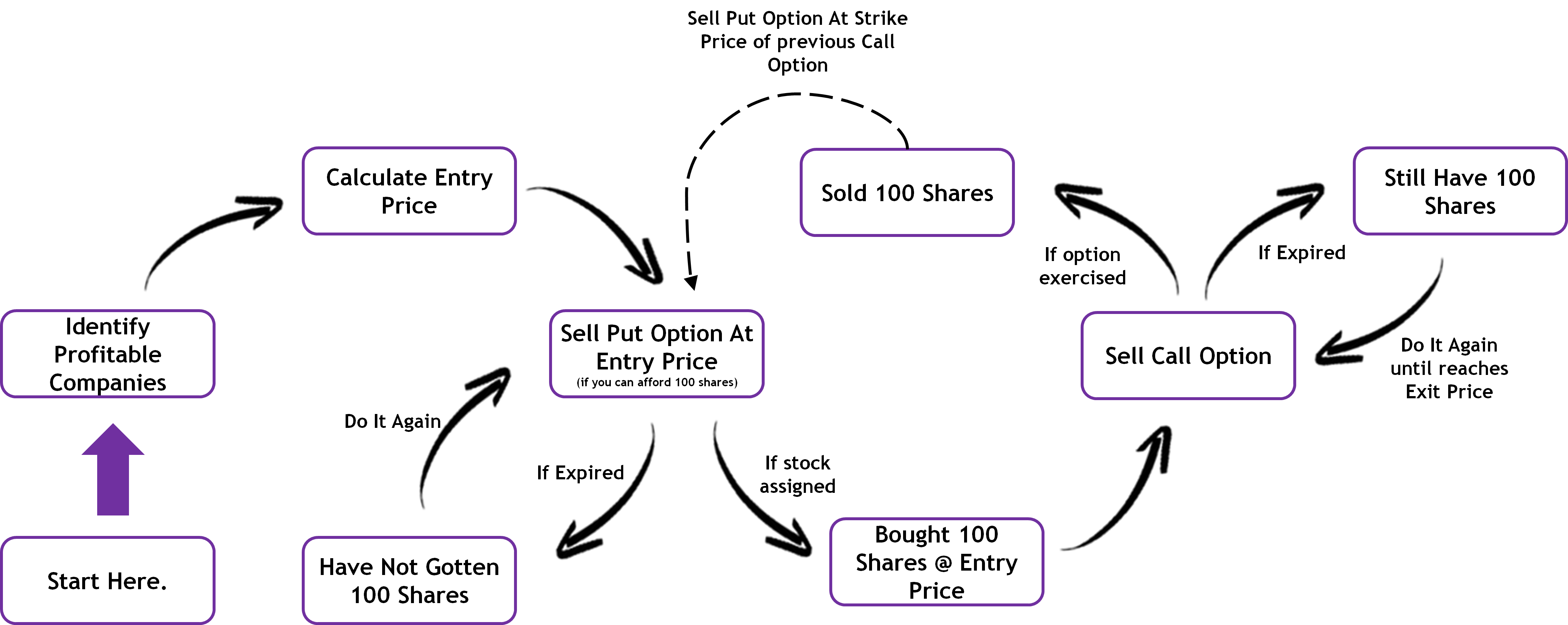Note: Before reading this blog post, this is only suitable for those who have some fundamental knowledge on options. So if you have little knowledge on options, it is probably best to go through the Options Investing Hub first.
When I learned about selling call options - I knew that it was a much better way to generate cash flow from my investments compared to investing for dividends.
You see, most decent dividend stocks pays a yield of 5%. However, most dividend stocks are mature companies which are able to pay high dividends and as such do not have reinvest much earnings back into the company to drive their growth.
As we should be familiar by now, share price eventually follow earnings growth.
If a company does not have increasing earnings - it is likely that their share price remains stagnant as well.
For example, companies like Facebook and Amazon do not pay dividends to shareholders, because they are constantly reinvesting their earnings back into the company - and because of which, their share prices constantly grow over the years.
That's why dividend investors who tell themselves "I will never invest in a company that does not pay a dividend" - will lose out on this enormous capital appreciation.
Well, there's nothing wrong with that since dividends provide a good steady source of cash flow to their portfolio.
However, what if there was a way to get "dividends" from these growth companies?
The answer - selling call options.
Can You Sell Call Options?

While there are many aggressive approach to selling call options, I want to set out that this is a blog post for the conservative investors.
Here's the criteria for selling call options for the conservative investors:
- The stock is fundamentally good, i.e. passes the 8-Point checklist
- You have 100 shares
- The stock must be optionable

Get Your 8-Point Checklist!
So that you know what stocks
to avoid investing in.
Now, why is this strategy so powerful?
Stocks are essentially businesses.
So, when we buy a stock that is fundamentally good, we want to hold them for the long term so that the business is compounding our money. Like how we invest our money in companies like Facebook or Amazon.
But do you know what is the problem with this? You are only rich on paper and not cash.
To illustrate this, let's say I bought a property at $1M and today it is at $1.5M.
Wow, that's a $500,000 of profit!
But here's the thing - these are just unrealised profits that makes you feel good about your portfolio.
You might say, "But Gin, if you were to sell it - you can get this $500,000 in cold hard cash!"
Well, true - but after selling, I have to go through the trouble to find another good property to buy...
The answer was blindingly simple - just rent out the property, and possibly collect $3,000 every single month!
Why am I sharing this?
Sometimes, our stocks are having capital appreciation - but yet we don't want to sell the stocks because we know it will continue to grow over the long term and only sell them when it reaches our exit price.
So what can we do?
Well, we could sell call options and get some profits in cold hard cash.
How Does Selling Call Options Work?

What does selling a call option means?
When you sell a call option, you are promising to sell 100 shares at a specified share price (i.e. strike price) before an expiry date. In exchange, you will get an option premium.
"Wait Gin, I thought you said we should hold shares for the long term - why would I make a promise to sell my shares?"
The truth is there's a very slim chance that you will actually sell your shares.
Here's why - let's use a real example (not a stock recommendation).
Let's say I bought 100 shares of Facebook at $261.56 and I sell a call option at a strike price of 295 at an expiry date of 28 days. In return, I collected $109 in option premium.
Watch this video to learn more.
Let me explain the "5% Milking Strategy".
The number 5% actually represents the amount of cash flow we aim to get from the stock in a year.
Why 5%? Well, this is a decent dividend yield that I used to aim for when I was a dividend investor.
So let's say for the 100 shares of FB at $261.56 - that's a total investment of $26,156 and a 5% cash flow means collecting $1307.80 per year. Therefore, in 28 days, we aim to collect at least $100.
At the end of 28 days, if the share price is above our strike price of 295 - the call option will be exercised, and we will sell the 100 shares at $295, making a neat profit of $3,344.
"Wait, Gin, I thought if we held a good stock - we want to hold as long as possible until it reaches our exit price? What if $295 was not our exit price for Facebook?"
Well, what's stopping you from buying back the shares at $295?
For those who are confused, let's illustrate this:
- I bought 100 shares of Facebook at $261.56
- I sold a call option and collected $109.
- The call option was exercised, and I sold the 100 shares at $295
- I now have no FB shares.
- I then decide to buy 100 shares at $295
What is my average purchase price for my 100 shares of Facebook?
Well, it is still $261.56!
(I sold 100 shares at $295 and bought them back at $295 - it can be taken as if that transaction did not take place)
And not only that, I collected a sweet $109 in cash by selling call options!
To make things better, you can also sell a put option at $295 and collect more option premium!
And you simply repeat the process until the stock reaches your exit price.

What's Next?

For those who want to execute this 5% milking strategy, there are more things to cover such as the entry rules and the risks involved.
I will encourage you to check out the "Selling Put Options" strategy in our free resource, the Options Investing Hub.
Personally, this has generated myself a good amount of cash flow every single month, and its a strategy that is ideal for those with bigger portfolio and hoping to get some cash flow from their investments.
For those who are starting with a smaller portfolio, don't be discouraged - we all have our individual journeys! We all have to start small at some point, and to me, that would be starting first with collecting quality companies by buying shares. Do check out our Stock Investing Hub for this 🙂
Both the Stock Investing Hub and Options Investing Hub are free resources I created for my readers and is made available to you through the link below.

The Knowledge Hub
Be it stocks or options, never get lost in your investments again.
